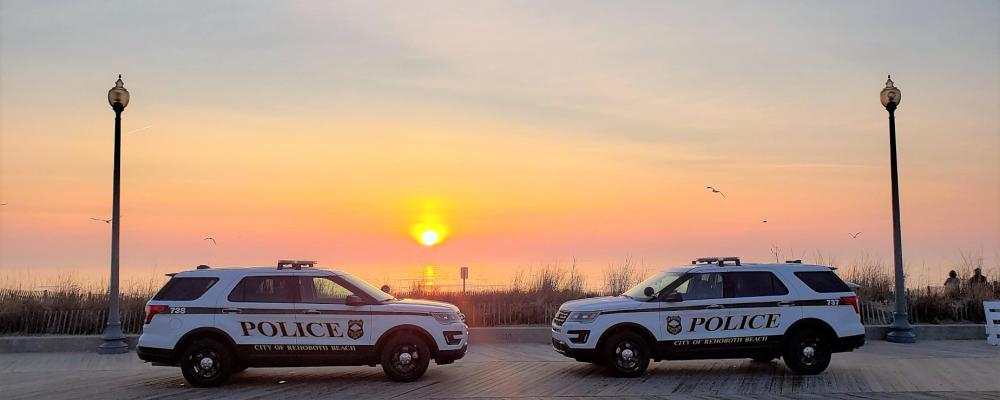
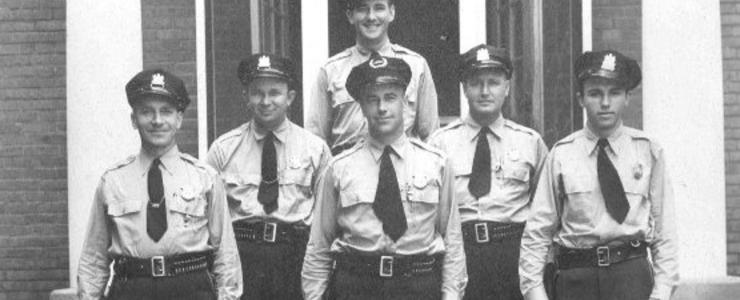
The Rehoboth Beach Police Department was first authorized by the city commissioners on July 8, 1892. The City of Rehoboth Beach was originally called Cape Henlopen City with the name being changed around the turn of the century. The first police officer employed by the city was actually a seasonal police officer working only during the summer months. The information listed below was taken from the original minutes of the commissioners meeting on that date.
July 8, 1892: "Mr. Hooper moved that Mr. Ebe W. Tunnell and E. J. Morris be authorized to select and appoint a suitable person to act as policeman at Cape Henlopen City, for the unexpired month of July, and the month of August, of the current year, whose pay shall not exceed thirty-five dollars per month. Passed."
July 16, 1892: "The President reported having secured, as Special Police, the services of Henry Ennis at a salary of thirty dollars per month. Mr. Walker moved that the President be authorized to purchase a uniform consisting of coat, with brass buttons, and helmet hat. Carried."
One of the first duties of the new police department was to "take up and impound cattle and horses found at large within the limits of Cape Henlopen City, and that a fine of $1.00 with expenses at the rate of twenty-five cents per head per day be collected on each and every horse or cow, or any other livestock found."
1910 – 1920
The City of Rehoboth Beach appointed the first full-time Chief of Police for the Rehoboth Beach Police Department. Law enforcement in the past was conducted only during the summer months. Chief William P. Downing was appointed on August 19, 1911 and was paid a salary of $45.00 per month. Following this appointment the city enacted the first ordinances on July 6, 1912 to cover traffic violations. The motor vehicle was still a new concept at the time and a speed limit was set at 12 miles per hour. Violators could be assessed a fine ranging from $1.00 to $20.00. Almost 100 years later the minimum fine for a speeding violation remains at $20.00.
To better equip the city's new police department, the city authorized the purchase of a jail cell on August 10, 1912 for use at the rear of town hall. This "double steel cage" was subsequently installed and was well worth the investment. This cell remained in use at the police department for 83 years until it was removed in 1995
1920 – 1930
The City Commissioners authorized the Mayor to employ a night watchman on June 7, 1924. While records do not show who this watchman was, he was paid $60.00 per month and also ordered to act as a traffic officer. He was under the supervision of the Mayor. On August 7, 1926 Chief Downing's salary was increased by $10.00 to $100.00 per month. The Chief had remained at the same salary for 14 years.
Records show that the Chief of Police ordered three dozen "Special Police" badges at the direction of the mayor. Unfortunately the location of these badges is unknown. It has always been a priority to the city to ensure that the beaches are kept clean. Even in 1927 the police department had signs posted directing citizens "not to ride your horses or bring your dogs on the beach front". Proactive enforcement of this ordinance still occurs today, although horses are no longer a problem.
In 1928 a 10' x 12' building was constructed in the median on Rehoboth Avenue at First Street. This fire-proof detention house building was referred to as the "police place" and also the "police booth". The jail cell was later removed from the police booth and placed at a city warehouse on Olive Avenue at the boardwalk, before it was eventually moved into the police station to be constructed years later.
Also in 1928, Chief William P. Downing left his employment with the city. As the city's first Chief of Police he remains the second longest serving Chief of Police to this day. Chief Clarence Lynch was hired to replace him. Chief Lynch remained as the Chief of Police until 1930 before leaving the city to join the newly formed Delaware State Police.
1930 – 1940
In 1930 Chief William S. Downing was hired to replace Chief Lynch. The relation to the long-serving William P. Downing is unknown. Chief William S. Downing only served for less than a year in 1930. That same year Chief Elmer T. Palmer was hired.
It is unknown when exactly the very first vehicle was put into service for the police department, however, the first record mentioning a police car used by the Rehoboth Beach Police Department was discovered on May 16, 1931. It was a Chevrolet and the city commissioners had authorized the purchase of liability and property damage insurance. A few months later on September 5, 1931 a new Ford police car was purchased to replace the previous Chevrolet model.
On January 2, 1932 a leather police uniform was ordered through the mail from Sears & Roebuck for Chief Palmer at a cost of $27.45 for his service in the winter. Unfortunately Chief Palmer had to return his leather pants since they did not fit him properly and a suitable size could not be located. The city was refunded a total of $8.00. Chief Palmer's salary was also increased by $25.00 per month due to his dual role as Superintendent of Streets.
At the regular Commissioners Meeting on August 30, 1934, , the City Finance Committee requested a monthly report from the Chief of Police showing the number of arrests, dates of arrests, causes of arrests, amounts of fines imposed and received and handed to the secretary. This practice remains in use today. The Chief of Police presents a monthly report at each regular Commissioners meeting.
On December 7, 1935 the city traded in the 1931 Ford Police car and financed a new car for the RBPD. A standard Chevrolet Coach was purchased from the Moore Chevrolet Company, Lewes, Delaware. The cost was $30.00 per month for five months, with the old Ford used as a trade-in.
On March 7, 1936 a booklet of city ordinances and revised ordinances was published containing a total of 44 ordinances. 1500 copies were printed. Click here to see a scan of the original printed document.
In 1937 the RBPD consisted of a total of six officers. These officers were Chief Elmer Palmer, Joseph Dutton, N.B. Joseph, Burton Dick, Walter Evans and E.S. Pettyjohn. On January 7, 1938 new rules and regulations were set for the RBPD. Click here to read the rules and regulations.
On March 12, 1938 the Chevrolet police car was traded in for a standard Ford Coach. The car was purchased from Charles Dale Lingo, Millsboro, DE., for $739.85 including a trade-in value of $400.00 for the old police car.
In a very progressive move for the time, the City of Rehoboth Beach hired the first African-American Police Officer. A motion was made at the Regular Commissioners meeting, by Mr. DuPont and seconded by Mr. LeCato, that "Elmer Woods (colored)", be employed as a member of the police force of the City, and that he shall be paid an annual salary of $1.00 per year. Mr. Woods was paid an additional $10.00 for his duties during the summer season. The Commissioners expressed their appreciation in the way he handled his duties. No known pictures exist of Mr. Woods.
On November 12, 1938 a Colt pistol was purchased for the RBPD for $26.40, a rifle for $18.75, and a First-Aid kit for the police car at $7.35. These same Colt revolvers were carried, and used by the police department until the mid-1970's.
During the 1930's and prior to the use of two-way radios, officers were notified of complaints by a red light, which was erected above the police booth as a signal to the police on duty. This red light would signify that there was a call at the booth requesting police assistance.
1940 – 1950
Chief William Marvel was hired as the new Chief of Police in 1941. He served until 1943. The RBPD saw several police chiefs come and go during the 1940s.
On June 12, 1943 the secretary of the Board of Commissioners reported receiving the resignation of every member of the city's police force due to low pay.
In 1943 Chief Henry Hill was hired as the Chief of Police. He served until 1945.
In an example of the aforementioned monthly report by the Chief of Police, on January 8, 1944 it was reported the police department handled 31 complaints, made six arrests, three dogs and one cat were shot and buried at the request of their owners. Nine warnings were issued for violations of the motor vehicle code, and one child on a bicycle was given a warning.
The first record of RBPD officers receiving formal training was discovered on March 11, 1944. Training in laws of arrest, trial and procedure, etc., was conducted by a Sgt. Hickman of the Delaware State Police. Instruction was also given in fingerprinting, reading and classification of fingerprints. The Police Chief also requested the purchase of a spare tire for the police car which had none when purchased. This had caused police officers to be stranded three times during the past month. It was also requested of the Commissioners that summer uniforms be purchased for Police Officers.
The first "modern" office equipment was provided to the RBPD in January 1946. A used typewriter from the City Manager's office, was given to the Chief of Police for his use.
In 1945 Chief Jacob Moore was hired. The RBPD hired its first secretary a short time later on April 14, 1946. Charlotte Ross of New Castle, Delaware was hired as the first secretary to the Chief of Police at a rate of $25.00 per week. This is the first time civilian clerical help was employed within the police department.
The first police dispatchers were approved for hire on June 8, 1946 when Chief Moore requested one more uniformed officer and two men to answer telephones in the office.
In 1947 the RBPD still consisted of only six officers. These officers were Chief Jacob M. Moore, Joseph E. Kirker, Robert Stevenson, John R. Dudash, and Kermit L. Hill. A total of 11 seasonal officers were requested by Chief Moore for the summer of 1947.
The first marked police car was mentioned in city records on September 13, 1947. It was requested by Chief Moore that the police car be marked on both sides and the top of the trunk in the back with some type of insignia in order to distinguish it as the official police car of the City of Rehoboth Beach.
The first police radios were placed into service on March 13, 1948. The City Manager authorized the installation of a two way radio and telephone system for the RBPD. The cost to the city was $1,262 plus $125.00 for maintenance.
In 1948 Chief Moore left the department and was replaced by Chief John Zeallor. Chief Zeallor only served for approximately one year when he was replaced by Chief Irving Vienot in 1949.
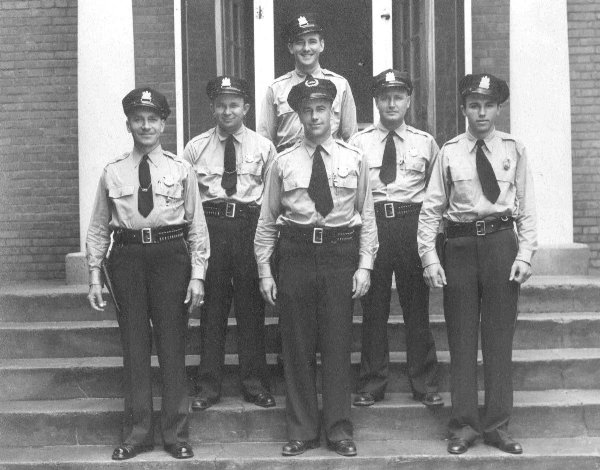
1950 – 1960
On October 4, 1950 the first parking meters were approved to be installed along Rehoboth Avenue, Wilmington Avenue, and Baltimore Avenue. The RBPD was designated to oversee their use.
The first documented accident involving an RBPD patrol car occurred on March 24, 1951. A Mr. Stoehr ran into the police car while it was parked in front of city hall. Another milestone for RBPD vehicle occurred the following spring when the City purchased a second police car. Until that time the RBPD only had one car. The second car was a Ford Mainline 8-cylinder approved for purchase on April 26, 1952. The police cars were given the designation "Car A" and "Car B".
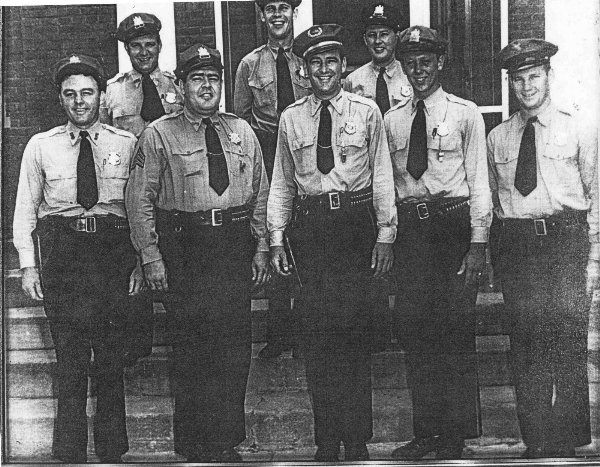
In 1955 Chief Vienot left the department and was replaced by another Chief who served a short time in office. Chief Spencer Hitch remained in office approximately one year and was replaced by William Marvel in 1956. Chief Marvel would remain in office until 1973.
In 1956 the RBPD purchased "toximeters" for use in testing intoxicated drivers. They were purchased at a cost of $3.50 each. Unfortunately RBPD officers had to rely on the assistance of the Delaware State Police in using them for a short while since no RBPD officers were trained in their use. While none of these "toximeters" remain in department storage, it is believed that these were a portable device similar to the PBT devices in use today. Shortly thereafter all officers were given a $5.00 per week raise.
It was decided on April 12, 1958 that the RBPD would be issued a new style of summer uniform. These consisted of white caps, blue shirts (4 per officer), and blue pants (2 pair per officer). They were purchased from Sears & Roebuck. (See below)
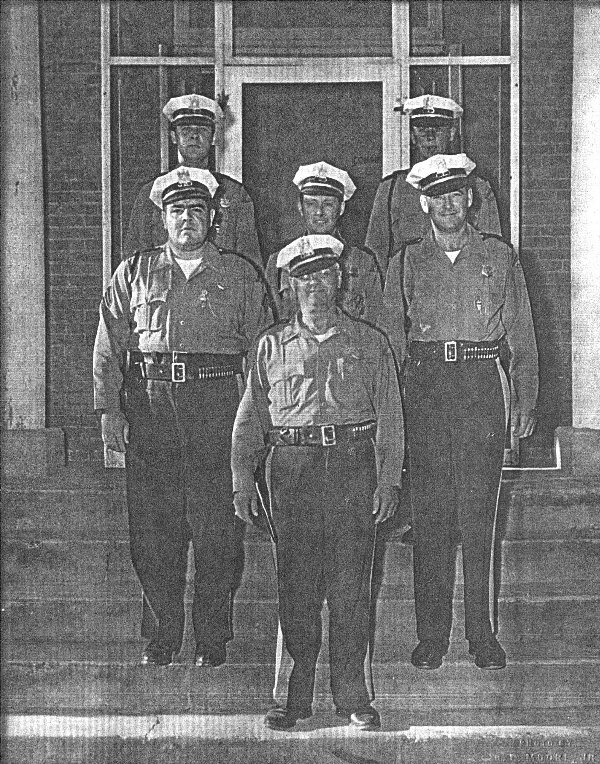
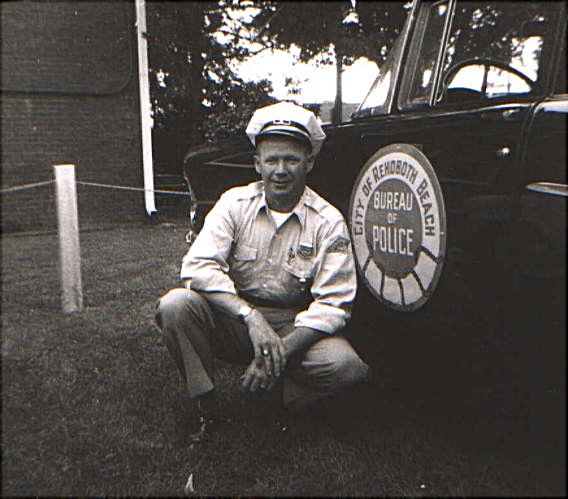
The weekly salaries for RBPD officers were raised on July 25, 1959 as follows: Chief of Police, $90.20, Sergeant, $78.10, Patrolman, $71.50, and Desk Clerks, $49.50.
1960 – 1970
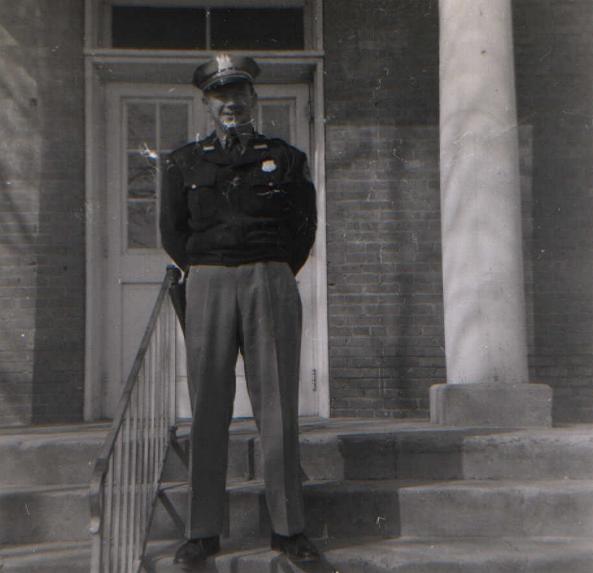
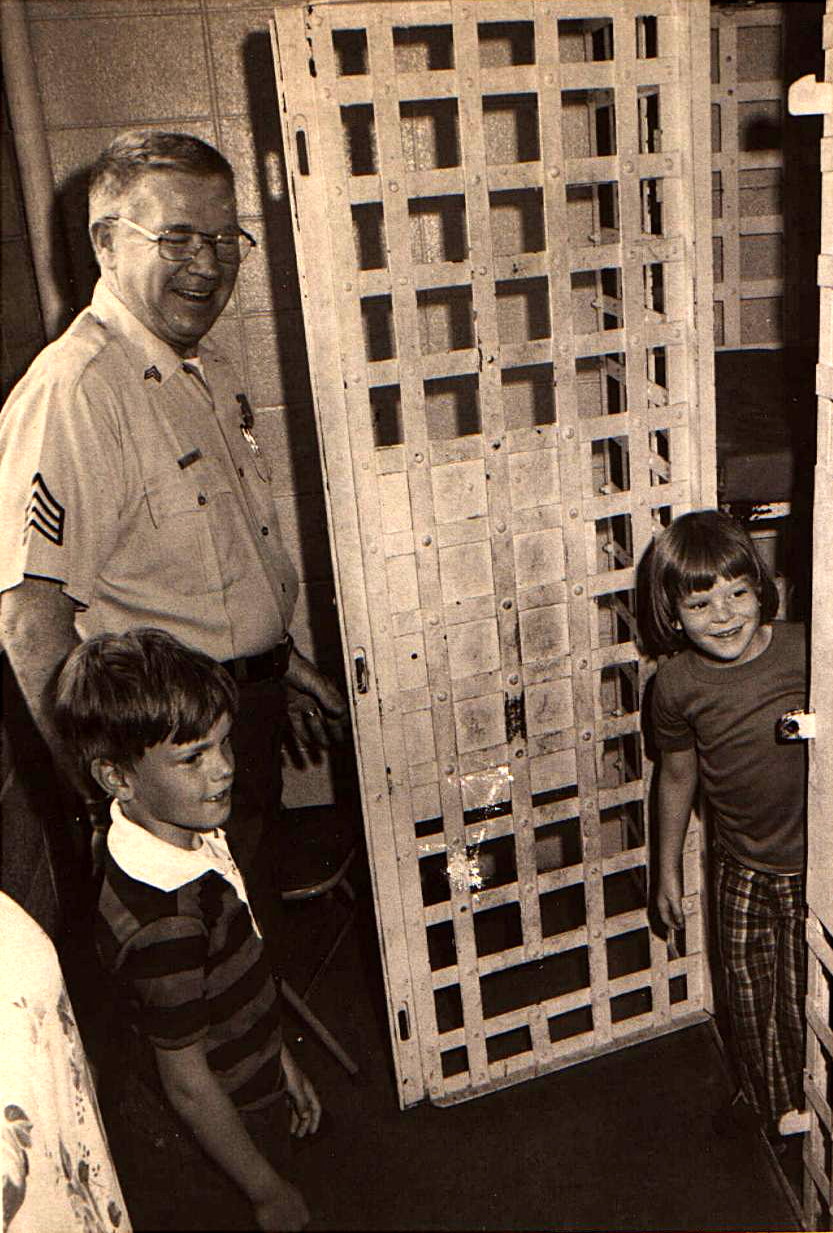
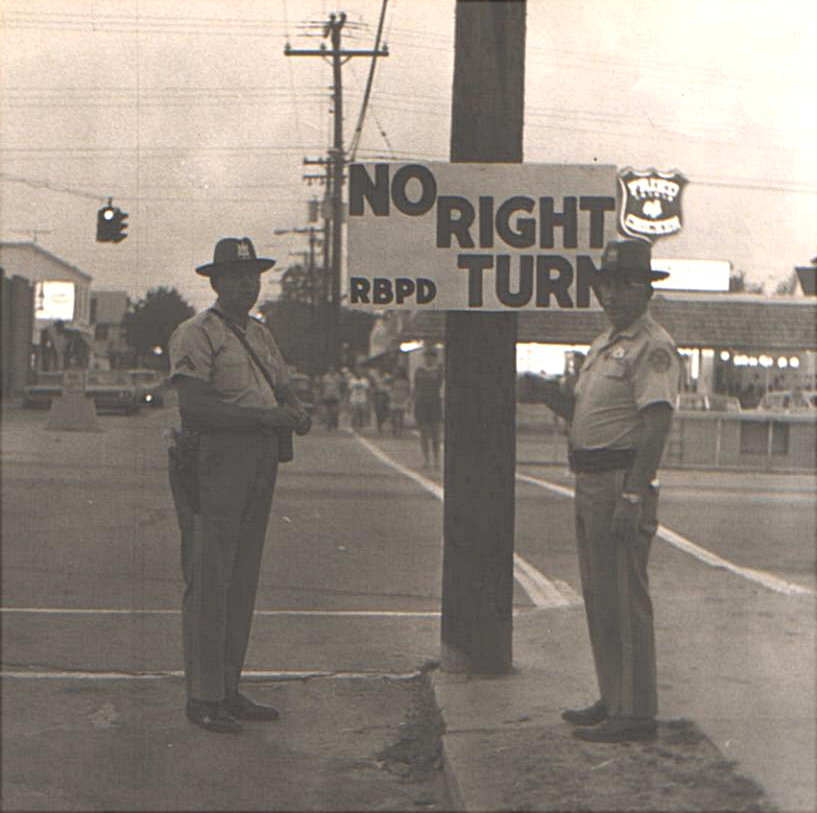
In April 1961, the RBPD purchased its first portable radios to be carried by officers. These new walkie-talkies were referred to as a "transistorized pocket sender" and $358.00 each and the receiver unit was $340.50. These radios were a far cry from today's modern 800 Mhz radios costing approximately $5000.00 each. However this new technology for the early 1960s allowed officers to better deal with troubles around Rehoboth by being able to get out of the car, keep in contact with a base station, and be prepared to relay information.
At the same time the RBPD purchased a new Polaroid Model 850 camera for $179.95. Chief Marvel stated that this was the "latest equipment of its kind out, with an automatic eye, and will produce pictures under any conditions". The RBPD continued to use Polaroid cameras sparingly until 2009. Polaroid has since discontinued production of instant camera film. Digital cameras have now replaced the Polaroid as an investigative tool.
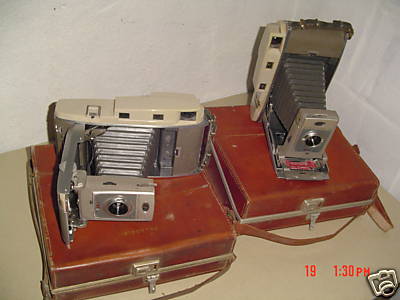
Chief Marvel purchased a one-passenger Cushman electric buggy for $700.00 on May 19, 1961. This buggy was intended for use on the boardwalk to cut down on problems including vandalism and response time for officers on foot patrol. This buggy remained in use into the 1970s.
The first parking meter enforcement personnel were approved for hire on February 23, 1962. Three women were hired to check meters for over-parking and were designated to start on May 23, 1962. Dedicated parking enforcement was still new to the city at that time. As a result there is a notation from the city commissioners meeting in July 1962 that Commissioner Clarence Lynch, former RBPD Chief of Police in the 1920s, recommended that the "parking meter girls" have more training in pleasant disposition and courteous leniency.
The Nor'-Easter on March 6-8, 1962 struck and caused major damage in the region and Rehoboth Beach was no exception. The boardwalk and many ocean front homes and businesses were severely damaged or destroyed. Every RBPD officer and secretarial staff donated two days during the immediate aftermath.
Rehoboth Beach Police: 1962
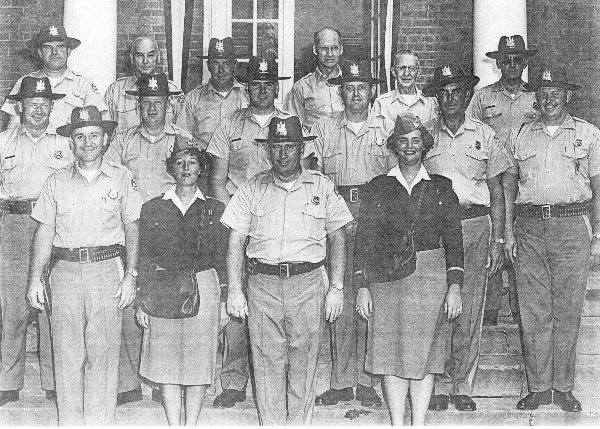
City records show that the total arrests in 1961 were 258 and in 1962 were 331. Traffic warnings in 1961 totaled 675, and in 1962, 527. Total complaints in 1961 totaled 1649, and in 1962 there were 1481.
Mayor Stamper made a recommendation to the Police Commission that they set up an Auxiliary Police Force - most towns use about twenty men - and the Police Force trains them and all the cost would be to the City would be for helmets, gloves and capes and if they wished to pay the Auxiliary Police if and when they were needed, perhaps some sort of scale could be arranged. They could be called in, in case of riots in the summer, Halloween, parades, etc. Mr. Royce stated that the Civil Defense was the origin of the Auxiliary Police. As an additional item, Mr. Royce requested that in the new City Hall, a rifle range be put in the basement, to help the police. This auxiliary force and the rifle range never materialized.
On February 7, 1964 the plans were formally accepted for construction of a new City Hall and police department. The police department was housed in a trailer during the period of construction. When the building was completed in 1965 the RBPD shared a building with City Hall and the Rehoboth Beach library. While the library moved long ago, after many renovations, the RBPD still occupies the same building, although plans are being discussed for the construction of a dedicated new public safety building.
In July 1964 it was becoming apparent to the city that the RBPD was not adequately staffed. Then Mayor Juel Stamper stated that the Chief of Police needed at least six officers to really patrol all areas of Rehoboth during the summer. At present time there were three officers in the summer during the day and five officers at night The winds of change were blowing in Rehoboth and on July 31, 1965 Commissioner Palmer advised that the Police Commission to appoint two sergeants for supervision at night from 8 to 12 and from 12 to 8.
During the mid-1960s there was a noted problem with speeding in the city. However, the RBPD did not have any radar or other speed detection device or training to help curb the problem of speeding drivers. The city intended on asking the Delaware State Police for troopers to run radar on city streets when available. However, one year later on July 14, 1967 the RBPD obtained its first radar unit. The Delaware State Police was tasked with training RBPD officers in its use. Today every RBPD patrol car has a radar unit installed.
In 1967 the RBPD now consisted of 11 policemen, 1 deskman, and 1 secretary. Some city commissioners asked why the RBPD even needed a secretary. The response was that the a new report and record system which necessitated such voluminous reporting that the men could not take care of this in addition to their regular duties, besides not being typists. Therefore a clerk-typist was hired for the day shift to take care of this duty.
While records are not always that complete, the first mention of a police K-9 was on April 19, 1968. This was an apparently new purchase as records showed that the K-9 handler, Patrolman Charles Moore, and the dog were going to training every other Monday. The expenditure for the police dog was set at $250.00. The K-9 unit was disbanded in the late 1970's and was not reinstated until 2006. The cost for the current K-9 was significantly higher than the $250.00 spent in 1968. However seized drug funds were used for the purchase of the RBPD's current K-9.
Training was becoming more and more important in the law enforcement field. In 1968 Chief Marvel and then Detective Rickards, completed a 12 week course in Law Enforcement at Delaware Technical and Community College in Georgetown, DE. Also, Sgt. Walls, and Patrolmen Fitzgerald, Bisbee, Bailey, and Mitchell were enrolled at Community College in a 12 week course in Criminal Law II.
Chief Marvel recommended on April 11, 1969 that the city hire an additional 6 officers for the RBPD. This was ultimately approved and the RBPD increased in size by almost 50%.
1970 – 1980
The following information was from a newspaper article dated June 6, 1971:
Rehoboth Beach, Del. (AP) Although the fun of the summer resort season starts officially this weekend, there are some very clear-thinking people around who are hoping it will be a bore. Nothing could be finer than having nothing to do this week-end, or all summer for that matter, as far as police here are concerned. Things didn't happen that way last year, and because of it a special detachment of 30 or more state troopers were assigned to a boardwalk beat every week-end for the rest of the summer. Last Memorial Day weekend, a local police officer tried to arrest a youth for spraying people with beer Saturday night on the boardwalk. Somehow it grew into a confrontation between the police and 1,000 youths, and although the situation was controlled, the troopers and some K-9 dogs, were prominently on view the next week and thereafter. It was expensive for the state (the police were on overtime) and somewhat embarrassing to local residents and officials. The city responded by hiring Philadelphia's Franklin Institute to do a $5,000 study on the peculiar problems faced by law enforcers at a summer resort. The recommendations have been implemented to varying degrees and Police Chief William L. Marvel now predicts, "I think we can handle anything that comes up this summer. I hope we don't have any trouble, but if we do, we're prepared," he said. The summertime police force at Rehoboth has been increased to 39 men, partly by replacing eight meter maids with foot patrolmen who can be summoned for other duties in an emergency. Communications also have been improved, both within the local police force and with State Police units. But concern and consideration for the kids probably will end up playing a greater role in fostering a peaceful summer. Some changes in the city ordinances also may be in the works according to City Commissioner Joseph H. Niblett, who along with others wants to let the kids stay on the beach at night, perhaps with a lighted late-night recreation area. "In my day at Rehoboth Beach we had something to do at night. We could dance in the hotels or go on the beach around a fire," said Niblett. "Now kids can't do that here. They can't play ball on the beach, or stay on the beach at night, so they all flock to the boardwalk and have nothing to do, and we have trouble. Let them dance in the sand. Light up one area of the beach, keep it open until midnight, let them play their guitars, and let them dance and play games," he said.
Beginning in the summer of 1973, officers were allowed to participate in a multi-jurisdictional drug task force, run through the Delaware State Police, known as the "Governor's Investigative Strike Force." One officer volunteered to service for a period of time (6-8 months), working with this unit, in an undercover capacity. The department continued to send officers to this unit through 1975.
During the winter of 1974, a huge teletype machine (6'x3'x4') was installed in the communications room of the police department. This was cutting edge technology for the time. Officers could finally send and receive messages without having to pick up the telephone and call the State Police. In order to use the machine, officers had to type a message on a long thin piece of paper. As you typed holes were punched in the paper. The officer then placed the paper in a roller which sent the message as the paper entered the machine. The only problem with this was you could not see what you typed, so all the mistakes in typing went too!
Rehoboth Beach Police: 1974

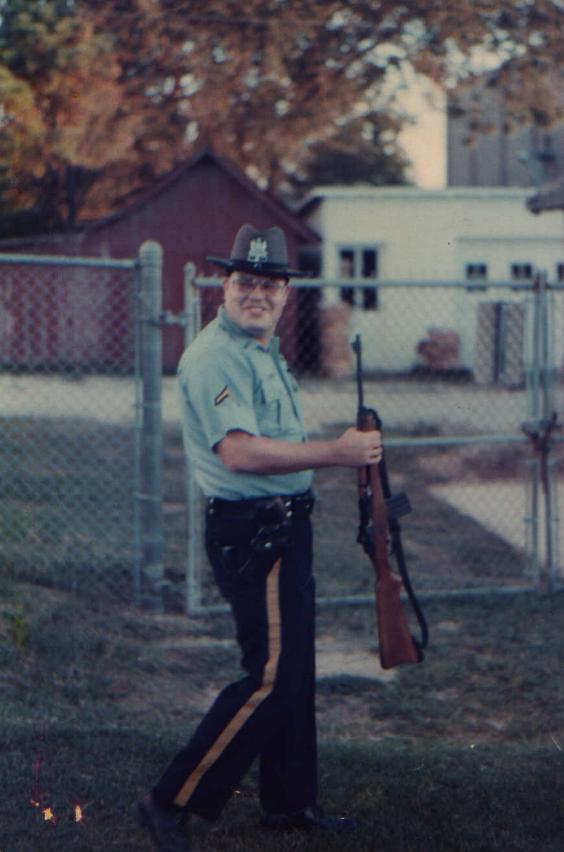
In 1975 Rehoboth Beach Police uniform trousers where changed to dark blue, however they were changed back to French blue a year later due to their unpopularity among the officers.
Rehoboth Beach Police: 1976
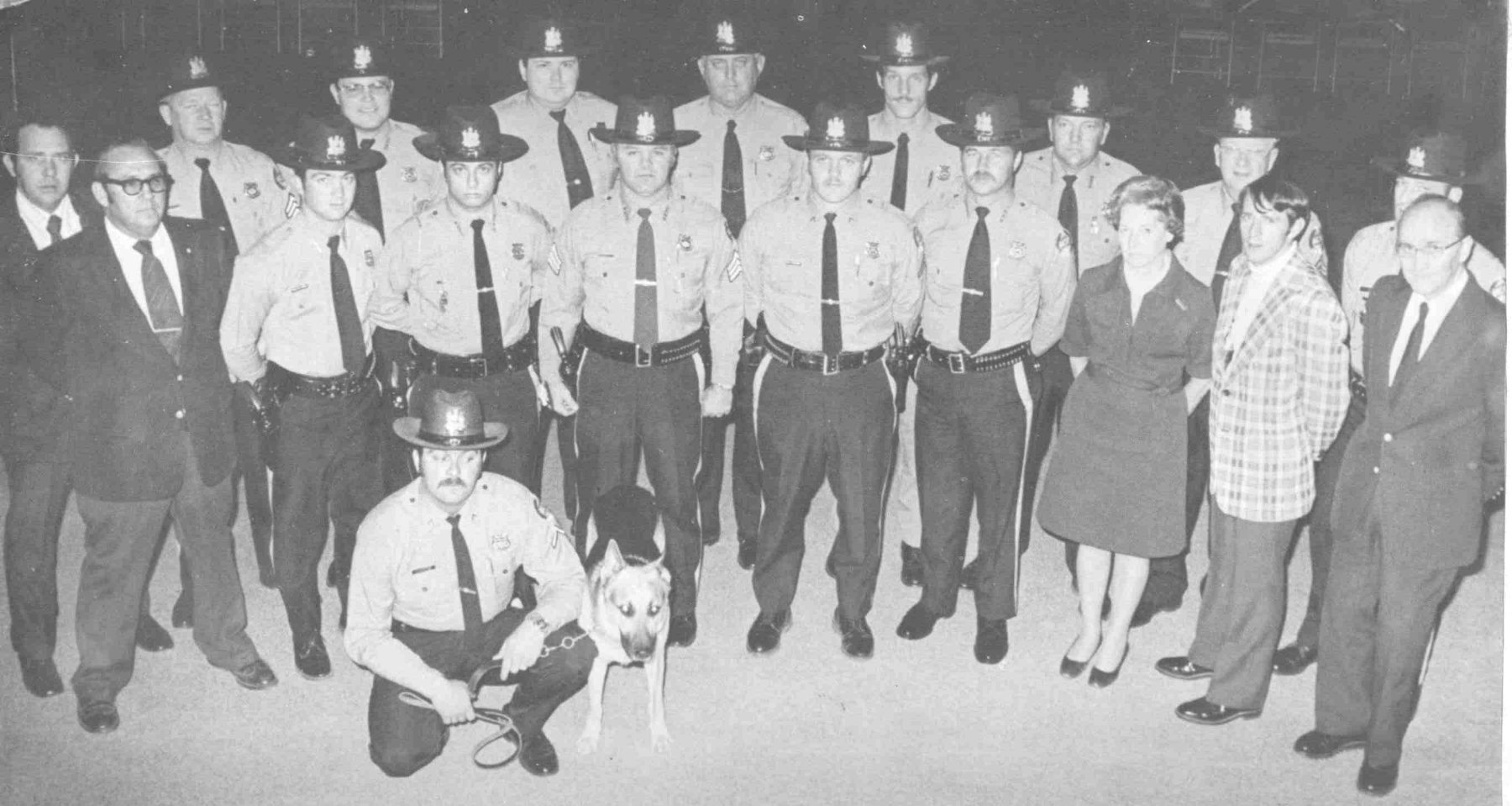
On January 9, 1976 Chief William Walls announced that he would be resigning as Chief of Police due to health reasons effective January 23, 1976. Chief Walls joined the force in 1955 as a patrolman in 1955 and was appointed Chief of Police in June 1973
1980 – 1990
Rehoboth Beach Police: 1982
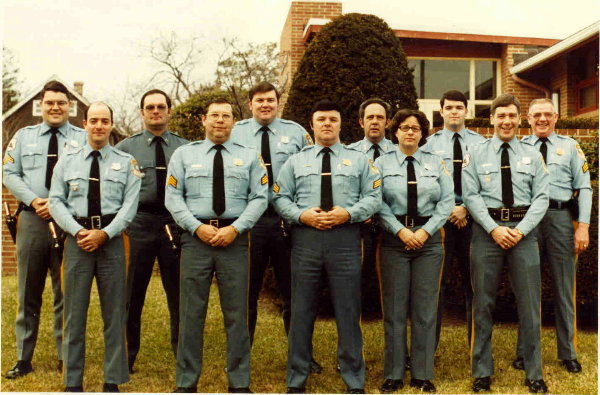
In 1983 Rehoboth Beach Police Department began using motorcycles to patrol the city. The program started out with a small Honda and progressed to a full-size Harley Davidson. The motorcycle patrol was disbanded in 1987.
In 1983 the Rehoboth Beach municipal building was renovated to include the area previously occupied by the Rehoboth Library. The RBPD was expanded and the entrance to the department was changed from the rear of the building to a front entrance facing Rehoboth Ave.
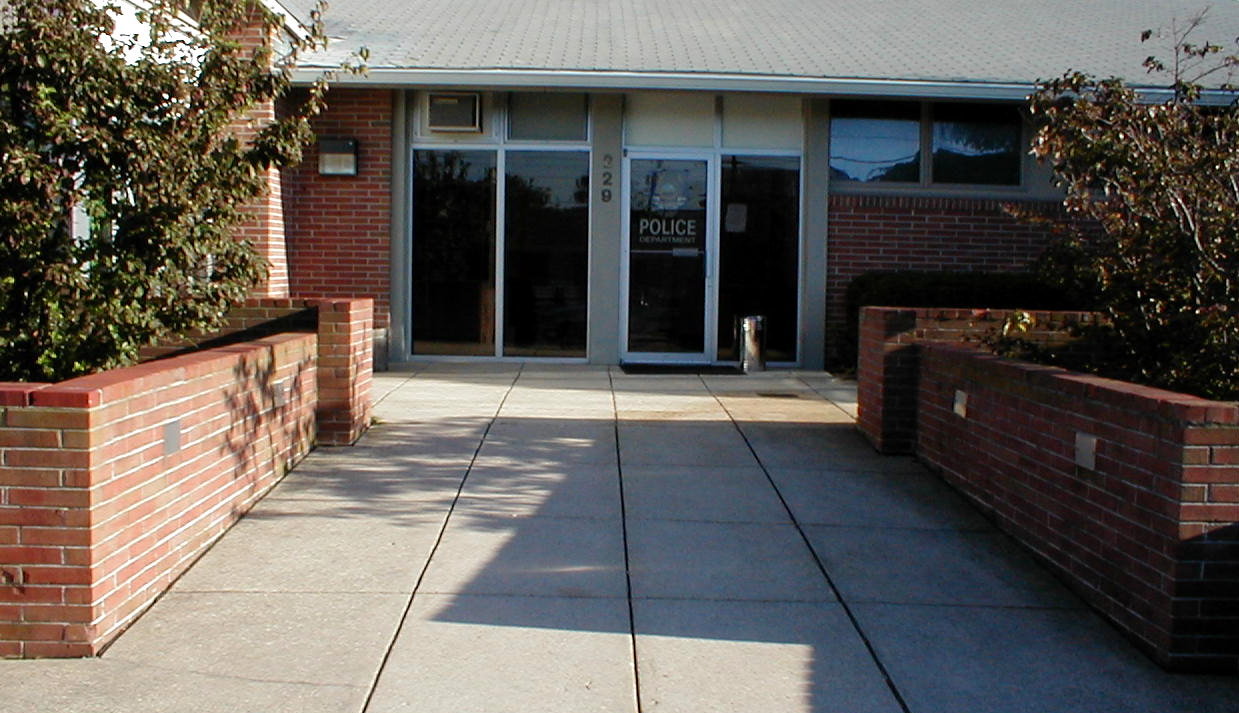
During the winter of 1983, the police department began a project called "Operation Santa Claus." RBPD personnel, both sworn and civilian, participated in the solicitation of toys, and funds to purchase toys, which were then distributed to needy families during a huge Christmas party held in Rehoboth's Convention Center. The program became so large that the last few programs served several hundred children
1990 – 2000
In the spring of 1990 the RBPD began teaching the A.D.A.M. anti-drug program at the Rehoboth Beach Elementary School. This program was later changed to the D.A.R.E. program and continued for many years.
On July 10, 1990 the city approved the purchase of body armor for police officers. This was the first time that this item was provided by the department for officers. Body armor is now standard issued for all RBPD officers.
In 1991 long-time Chief Harry Maichle left the department after having served as Chief of Police since 1976. He was replaced by Chief Creig W. Doyle, who had recently retired as a lieutenant from the Metropolitan Police in Washington, DC.
The following summer Chief Doyle made many internal changes in the operation of the department and increased training for the officers. On May 3, 1992 the Bicycle Enforcement Unit was established and was the first police bicycle patrol in Sussex County. This unit began with one full-time police officer riding a bicycle which had been purchased and from funds obtained from the Delaware Office of Highway Safety. This unit now consists of a total of eight trained seasonal police officers. Two of these officers are assigned to each of the four shifts during the summer months.
The following year a band of several officers made attempts to unionize and for the city into negotiations for a labor contract to bring increases in wages and benefits. Unfortunately for the officers the law was not on their side and due to the size of the department, the city was not obligated to recognize a collective bargaining effort.
In 1993 the RBPD began participation in "Operation North Star", a program initiated by the federal government to allow state and local government to acquire used equipment at no cost. Over the years, the police department has acquired much technological equipment. These computers provided the department with it's first internal computer network.
Also in 1993 Chief Doyle made a second request of the city for a new Detective position. The department had been without a dedicated Detective since 1979. The city commissioners ultimately approved the new position and on April 1, 1993 the position of Detective was re-instated. The first Detective since 1979, Cpl. David Webb, was appointed to the position.
The mid 1990s were a relatively quiet time for the department. However in 1997 officers stepped up their efforts to unionize due to a recent change in the law allowing collective bargaining in municipalities with more than 25 employees. Officers voted nearly unanimously to join the International Brotherhood of Teamsters. Contract negotiations began in 1997 and continued on for two years before the first contract was ultimately signed and agreed to on September 23, 1999. This contract brought about needed salary increases as well as improvements to the benefits package.
In the latter part of 1998 laptop computers are installed in RBPD patrol vehicles. The new technology allowed officers to check a driver's license status and vehicle registration directly from their vehicles without going through the dispatch center.
2000 – 2010
In the summer of 2000 an All-Terrain Vehicle (ATV) patrol was started for use on the beach as a public relations and drug enforcement tool. This vehicle is now primarily used during the summer time and on the 4th of July.
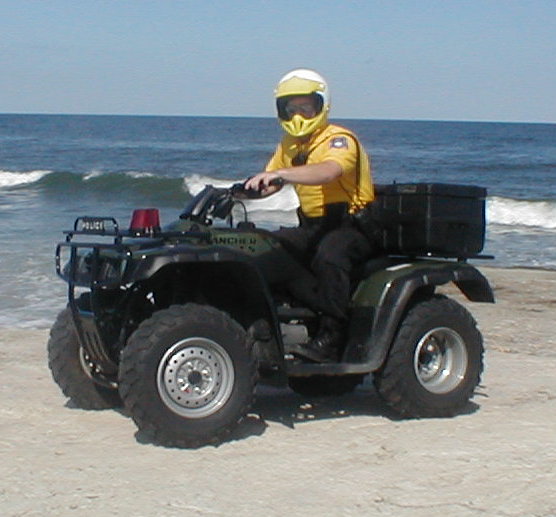
The Rehoboth Beach Police Department goes online by launching this website on January 13, 2001. General department information, history of the department, employment information, etc. was included.
On March 15, 2001 Chief Doyle left the department after having served nearly 10 years as Chief of Police. Sgt. Keith Banks was made acting Chief and was appointed as new Chief of Police two weeks later. He through the ranks beginning his career as a seasonal officer in 1989.
On Saturday, September 15, 2001, the RBPD along with the City of Lewes Police and Fire Departments jointly participated in a staging a display to demonstrate respect and appreciation for the fallen police officers and fire fighters at the World Trade Center disaster on September 11, 2001. Fire trucks and police vehicles were draped in black and placed at the boardwalk on Rehoboth Avenue. Fire apparatus had their ladders extended with the intention of attaching and unfurling an enormous American flag.
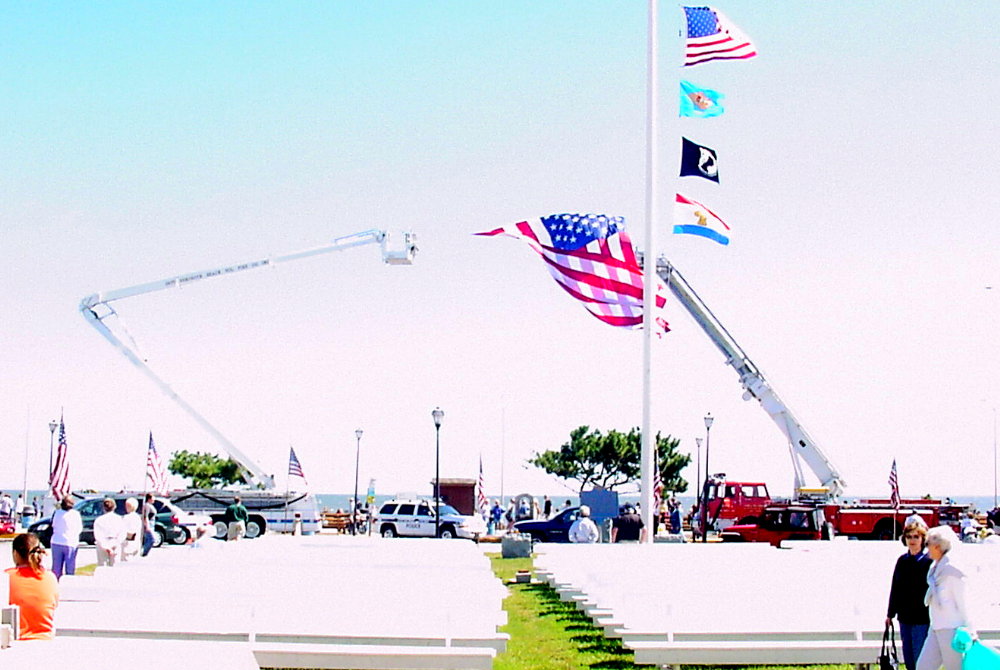
On April 15th, 2002 the RBPD began installing in-car Mobile Vision video camera systems. Officers used the new systems when in contact with the public which recorded both video and audio onto a VHS tape. These tapes proved to be invaluable as evidence for DUI offenses and other arrest situations. These systems have since been upgraded to a totally digital DVD system.
On September 11, 2002 the terrorist attack a year earlier was still fresh on the minds of most Americans. The RBPD and the Rehoboth Fire Department's, along with other agencies across the nation, observed the first anniversary of September 11th, with a display of equipment throughout the day. Police personnel also made appearances at ceremonies at the Rehoboth VFW in the morning and the Bandstand that evening
In 2008 the RBPD implemented the use of "e-tickets". This new program had been experimented with in other parts of the state and allowed officers to create traffic tickets on their in-car computer and print the tickets out for the violator from small printers also installed in the police vehicles. The courts received the information instantaneously and there was no longer a need for the violator to sign for a copy of the ticket.
On April 6, 2010 the Rehoboth Beach Police Department saw the retirement longtime sergeant John F. Bushey who retired after 36 years of service with the agency. After serving as a seasonal officer he was hired full-time in May 1974. He then served as the department's training officer since 1977. He was well known throughout the law enforcement community by many officers who began their policing careers as seasonal police officers here in Rehoboth Beach. In 2002 he was nominated for "Municipal Police Officer of the Year" through the Delaware League of Local Governments. At that time it was estimated that he had part in the training of over 1200 seasonal officers.
POLICE CHIEFS OF THE REHOBOTH BEACH POLICE DEPARTMENT
1912 - 1928
Chief William P. Downing
1928 - 1930
Chief Clarence K. Lynch
1930
Chief William S. Downing
1930 - 1941
Chief Elmer T. Palmer
1941-1943
Chief William Marvel
1943 - 1945
Chief Henry F. Hill
1945 - 1948
Chief Jacob M. Moore
1948 - 1949
Chief John H. Zeallor
1949 - 1955
Chief Irving Vienot
1955 - 1956
Chief Spencer P. Hitch
1956 - 1973
Chief William L. Marvel
1973 - 1976
Chief William G. Walls
1976 - 1991
Chief Harry J. Maichle
1991 - 2001
Chief Creig W. Doyle
2001 - Present
Chief Keith W. Banks

